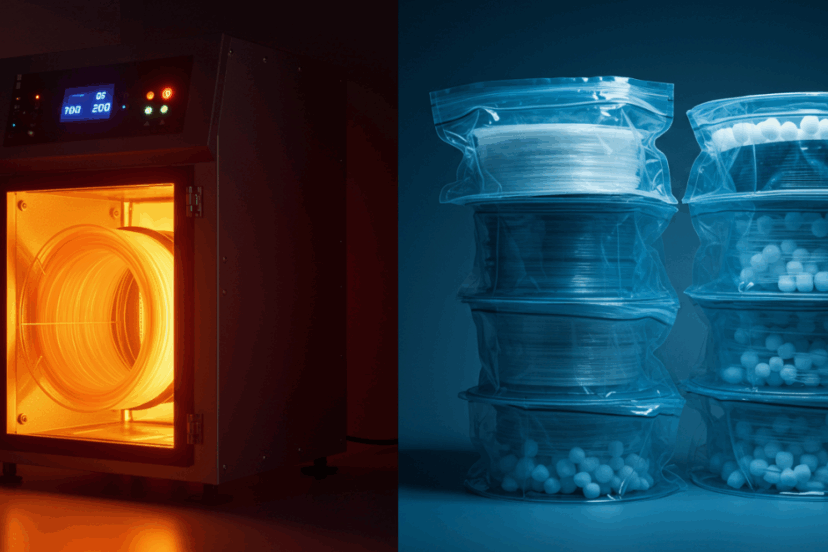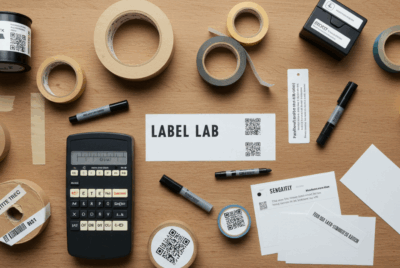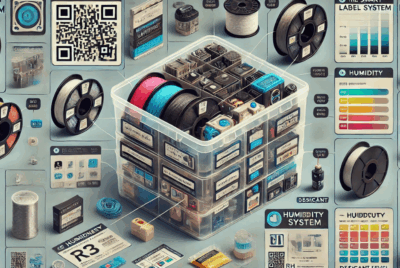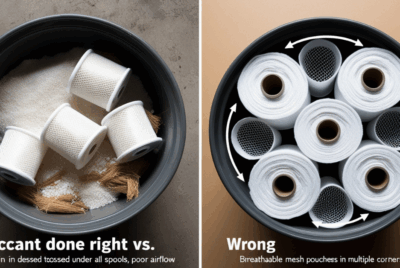What’s the difference between drying and storing filament?
1. It’s Not the Same Thing
Here’s a common misconception in the 3D printing world:
“If I dry my filament, I don’t need to worry about storage.”
Wrong.
Drying filament and storing filament are two completely different steps, and understanding the difference is the key to maintaining print quality over time.
2. What Is Drying Filament?
Drying filament means removing moisture that’s already been absorbed into the material.
Moisture causes all kinds of print issues:
- Stringing
- Popping sounds
- Weak layer adhesion
- Brittle parts
- Surface bubbling
Drying = resetting your filament to a usable state.
3. What Is Storing Filament?
Storing filament means keeping it in a controlled environment to prevent it from absorbing moisture in the first place.
Proper storage maintains the filament’s dry state after drying, during both active use and long-term rest.
4. Why Drying Isn’t a Replacement for Proper Storage
You can dry filament all day long, but if you toss it back in a humid room or open-air shelf…
It’ll reabsorb moisture. Fast.
In fact, some filaments like Nylon can go bad in just hours without protection.
Think of drying like washing your hands.
And storing like wearing gloves.
One doesn’t replace the other—they work together.
5. When to Dry Filament
Dry your filament if:
- It’s been sitting out for more than a day or two
- You hear popping sounds during extrusion
- The filament feels brittle or soft
- You’ve noticed print issues (even after tuning your slicer settings)
- You’re about to store a spool for long-term use
Drying is your reset button.
6. Signs That Your Filament Needs Drying
- Popping, hissing, or sizzling during prints
- Bubbles or inconsistent lines on your print surface
- Increased stringing or blobbing
- Brittle, snapping filament
- Poor bed adhesion or weak prints
If you’re unsure, dry it first and test again. Moisture is sneaky.
7. Methods for Drying Filament
| Method | Notes |
|---|---|
| Filament dryer box (e.g. SUNLU S2, PrintDry Pro) | Most reliable and consistent |
| Food dehydrator | Great for DIYers |
| Oven at 50–60°C (122–140°F) | Risky if temps fluctuate |
| Dry box with low heat | Good for light moisture issues |
| Room dehumidifier | Not precise enough alone |
Drying typically takes 4–12 hours, depending on the material and method.
8. When to Store Filament
Store filament anytime it’s not being used, especially if:
- You won’t be printing for more than a day
- The filament is moisture-sensitive (PETG, TPU, Nylon)
- You live in a humid or coastal climate
- You want to preserve open spools for weeks or months
- You’re trying to extend the lifespan of unused filament
9. How to Properly Store Filament
✅ Use:
- Vacuum-sealed bags with silica gel
- Airtight bins with desiccants and hygrometers
- Dry boxes that double as spool feeders
- Cool, dark rooms with low humidity (<40% RH)
Label your spools with:
- Opened date
- Last dried date
- Filament type + print settings
10. The Role of Humidity in Both Processes
- Drying = Removes water already absorbed into the filament
- Storing = Prevents reabsorption by controlling ambient humidity
Ideal storage humidity = below 40% RH
For sensitive filaments like Nylon or PVA = below 20% RH
Always measure humidity inside your bins and storage areas.
11. Can You Dry and Store at the Same Time?
Yes—some tools do both!
For example:
- PrintDry Pro: Dries and then stores in low-RH
- eSun eBox: Basic drying + filament feeding
- SUNLU S2: Dries while you print, then acts as sealed storage
- Modified food dehydrators: Can be repurposed for long-term low-heat storage
But be cautious—some boxes only maintain dryness, not actively dry wet filament.
12. Tools for Drying vs. Tools for Storing
| Purpose | Best Tools |
|---|---|
| Drying | Dryer boxes, ovens, dehydrators |
| Storing | Vacuum bags, airtight bins, dry boxes |
| Both | SUNLU S2, PrintDry Pro, custom setups |
Don’t confuse storage containers with actual drying equipment—they’re not the same.
13. Why Both Are Critical for Print Quality
Without drying:
→ You’ll get failed prints, stringing, and structural issues.
Without storage:
→ You’ll need to dry again… and again… and again.
Drying saves a bad spool.
Storage keeps a good spool good.
You need both to print clean, strong, reliable models.
14. Most Common Mistakes to Avoid
❌ Drying filament and then leaving it on the desk overnight
❌ Assuming unopened filament is always dry
❌ Storing filament in cardboard boxes with no RH control
❌ Believing one drying cycle = permanent protection
❌ Using dry boxes for soaking-wet filament
Treat drying and storage as a system, not a single step.
15. Final Thoughts: It’s a Two-Part System
Think of drying and storing like a lock and key:
- Drying = Get it ready
- Storing = Keep it that way
If you want fewer failed prints, longer-lasting spools, and better overall performance—
✅ Dry it right.
✅ Store it smarter.
✅ Do both. Every time.
❓FAQs
- Can I skip drying if I store my filament in a dry box?
No. If it’s already moist, storage won’t fix it. Dry first, then store. - How long does filament stay dry in storage?
With proper sealing and desiccant, it can last months to years depending on the filament type. - Do I need to dry brand new filament?
If it’s factory-sealed, no. But if you’re unsure—or it’s been stored for a while—dry it to be safe. - Can I dry filament in its vacuum bag?
No. Always remove it from the bag before drying to allow moisture to escape. - What’s better—storing in vacuum bags or a dry box?
For long-term storage: vacuum bags.
For regular use: dry box with feeding capabilities.




